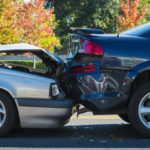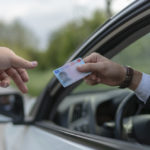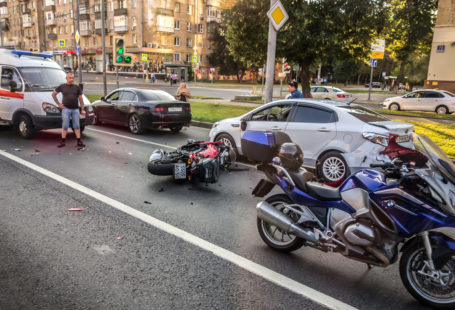Traumatic events can cause a condition called Post Traumatic Stress Disorder (PTSD). Often the events causing PTSD are violent and sudden, such as those we associate with a violent crime or the effects of war.
But any sudden, violent incident may cause PTSD. Car accidents involve both sudden and violent forces. In the seconds before impact, an accident victim might think they may die as a result of the crash. The severity of that incident can imprint itself in the brain and PTSD may develop.
Understanding PTSD
PTSD is a mental health condition based in anxiety. It requires treatment to get better. A PTSD diagnosis is complicated and involves a number of criteria, all of which must be met. The diagnosis needs to be given by a mental health care professional.
In essence, PTSD is a reaction to an extreme stressor or series of stressors. The stressor can be direct or indirect exposure to death or the threat of death, serious injury, or sexual violence. The event can occur directly to the victim, or the victim can witness the trauma of another. It can also include learning that a loved one was exposed to trauma. Medics and first responders often suffer from PTSD.
In PTSD, the traumatic event is persistently re-experienced in intrusive and unwanted ways. The victim may suffer from intrusive memories of the event, nightmares, or flashbacks. The victim may suffer emotional or physical stress as a result. As a result of these symptoms, a victim may seek to avoid triggers, thoughts, and emotions related to the trauma.
They may also suffer from:
- Negative thoughts regarding themselves or the world
- Exaggerated blame of self or others for causing the trauma
- Negative emotions
- Decreased interest in activities; or
- Feelings of isolation.
A victim may experience feelings of irritability or aggression. They may exhibit hypervigilance, an increased startle reaction, insomnia, or difficulty concentrating. Some victims feel depersonalization, the feeling that the experience was a dream. All of this causes a significant impact on daily life. Because the flashbacks or intrusive memories can happen without warning, a victim may feel as though they cannot control their lives.
PTSD in Car Accident Victims
People who are injured in car accidents, especially in severe accidents, are at heightened risk for developing PTSD. The accident does not need to be severe for PTSD to develop. Consider the following scenario. A woman is traveling through an intersection in her car. Her toddler is in his car seat in the back. All of a sudden, she sees something coming at her from the right at a high rate of speed. She looks back at her toddler and thinks, “we are going to die.” The impact occurs and her car spins. Luckily, she does not hit another car. The toddler is fine. She suffers from bruises and soft tissue injuries.
For months afterward, she has nightmares and flashbacks. She tells herself over and over again that it was just an accident. She tells herself that people have accidents all the time, so she wonders why she is feeling bad. The nightmares increase and so do her feelings of anxiety regarding driving. Over time, she gradually finds that she is hesitant to even get into a car, much less drive to the grocery with her toddler. She drives less and less as the nightmares and flashbacks increase until she stops driving altogether.
This is one example of what PTSD may look like in a car accident victim. It is not the severity of the accident, but rather, the perceptions of the victim that give rise to PTSD. Fearing that one’s life is in danger is one of the strongest predictors of the onset of PTSD.
PTSD Requires Treatment
In any victim, PTSD requires treatment with an experienced mental health practitioner. Without therapy, often the symptoms continue to worsen. There are treatment options.
Medical treatments revolve around taking either beta-blockers such as Inderal or Propranolol or taking anti-anxiety medication. Beta-blockers lower blood pressure and halt the flood of adrenaline. When depression is present, SSRIs (selective serotonin reuptake inhibitors) such as Zoloft or Prozac may help. These measures can be helpful, especially when used in conjunction with psychotherapeutic interventions.
Cognitive-Behavioral Therapies
A psychotherapeutic intervention, cognitive behavioral therapy helps some victims by reframing negative thoughts. Approaching a vehicle may initially trigger the thought “I don’t want to die.” Gradually, reframing the thought to make it less anxiety-provoking is the lynchpin of this therapy. Eventually, the stimulus no longer causes anxiety.
Prolonged exposure is a similar therapy which gradually exposes the patient to an increasing hierarchy of anxiety-provoking stimulus over time. Beginning with just imagining getting into a car, a therapist gradually moves the client to actually driving again. The therapist and patient process memories and feelings.
EMDR
Eye Movement Desensitization and Reprocessing (EMDR) is often used to reprocess traumatic memories. Unlike talk therapy, EMDR allows the victim to rapidly reprocess his or her memories making them less traumatic. It uses rapidly shifting eye movements, tapping, or other sensory awareness from right to left. This is coupled with talking through the feelings evoked by the underlying event.
PTSD is a debilitating condition for car accident victims. It is important to get help for the condition so that you feel better. If your accident was another’s fault and you are pursuing a claim, do not be afraid to tell your attorney about your condition. Emotional distress is an important part of any accident claim.





